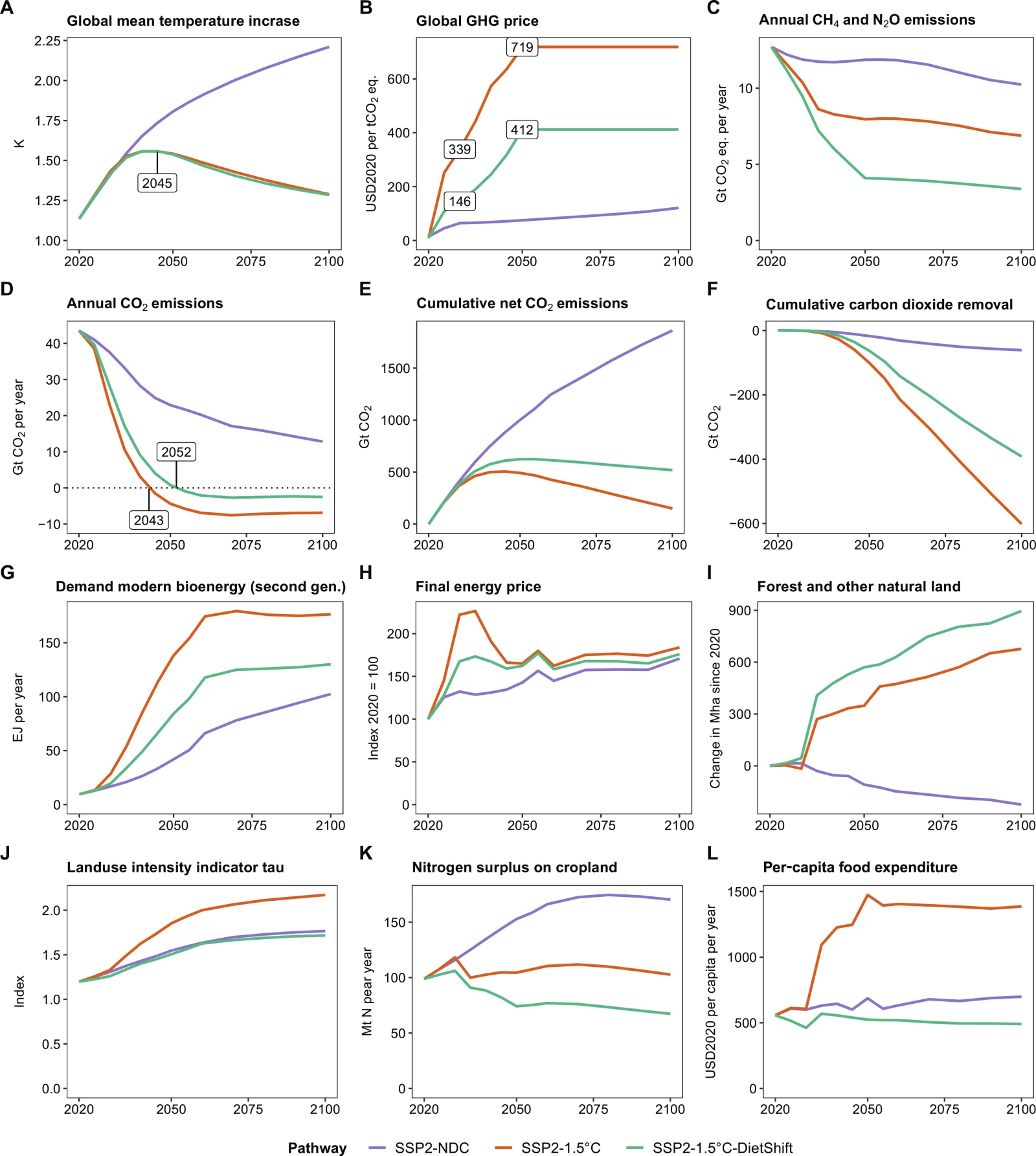March 27, 2024 | Science Advances | Source |
Introduction: German Potsdam Institute for Climate Impact Research investigates whether shifting to sustainable diets, such as the Planetary Health Diet, could significantly reduce greenhouse gas emissions and environmental impacts.
Key findings: Adopting a flexitarian diet, as recommended by the EAT-Lancet Planetary Health Diet, can significantly cut greenhouse gas (GHG) emissions, particularly methane from livestock, crucial in meeting the Paris Agreement's goal of limiting global warming to 1.5°C. Using the REMIND-MAgPIE integrated assessment model, the study shows that such a dietary change increases the feasible carbon budget, allowing the same climate targets to be achieved with less reliance on carbon dioxide removal (CDR) and less stringent CO2 emission cuts in the energy sector. This reduces GHG prices, energy costs, and food expenditures.
In addition, dietary shifts help eliminate obesity and underweight issues globally by promoting balanced nutrition. Also, such shifts free up agricultural land, reduce pressure on natural resources, and lower nitrogen losses. Overall, transitioning to healthier diets not only supports climate goals but also enhances economic welfare and reduces energy prices.

Figure | Key indicators for climate, energy, and land system development in the 21st century at global level from REMIND-MAgPIE. SSP2-NDC is shown as reference for a pathway that is not in line with the Paris Agreement. Peak global mean temperature increase (A) is identical in SSP2-1.5°C and SSP2-1.5°C-DietShift. The global GHG price (B) in SSP2-1.5°C-DietShift is 57% lower in 2030 and 43% lower in 2050 compared to SSP2-1.5°C. CH4 and N2O emissions (C) decrease considerably in SSP2-1.5°C DietShift, which relaxes the tight constraint on the CO2 emission budget (D and E). Reliance on CDR (F) as well as demand for bioenergy (G) are lower in SSP2-1.5°C DietShift, while final energy prices (H) increase less strongly. Forest and other natural land (I) increase stronger under SSP2-1.5°C-DietShift, while land use intensity (J) is lower and comparable to SSP2-NDC. Nitrogen surplus (K) decreases stronger in SSP2-1.5°C-DietShift and per-capita food expenditures for agricultural products (L) remain rather constant in the 21st century instead of a doubling in SSP2-1.5°C.





